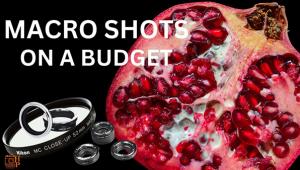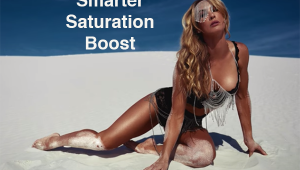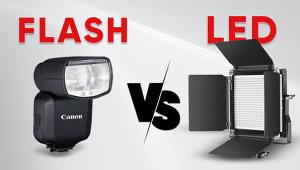Pro's Choice; David Stuart’s Light Choices; Mix & Match For The Job At Hand
“Most of the photo equipment that I use is rented,” says Atlanta, Georgia-based pro photographer David Stuart (www.davidstuart.net). “I don’t even own that much gear to begin with.”
Client: Personal/Portfolio |
|
 |
|
|
For most of his assignments, Stuart prefers a Hasselblad H2 with a Phase One P 45+ back, which he rents, along
with the lenses. For camera rentals, Stuart turns to Capture Integration (www.captureintegration.com) in Atlanta. What he does own and occasionally uses is a Canon EOS 5D Mark II and select L-series zooms.
“I find that it’s easier to have gear delivered to the job than to haul it around,” Stuart observes. “Some places deliver the gear; others, I have to have it picked up, so I’ll have an assistant run over and grab it the day before or the day of the shoot and bring it out to the job site.” The rental studios he normally shoots at rarely provide strobe lighting, however, so Stuart routinely works with Calumet (www.calumetphoto.com) in Chicago, Calumet or Pro Camera (www.procamerarental.com) in San Francisco, and Morel Studio Support (www.morelstudiosupport.com) or Professional Photographic Resources (www.ppratlanta.com) in Atlanta. “There are no hard and fast rules dictating where we get the gear; only that we get what we need when and where we need it.”
Client: Georgia Aquarium |
|
 |
|
|
The obvious advantage to renting is that you don’t have to worry about storing gear or that it will become obsolete. Of course, you are in a sense at the mercy of what’s available. Stuart points out that rental shops don’t necessarily carry the latest gear, although they tend to carry the most reliable and stable brands. And of course, the rental fees are passed along to the client, something you can’t exactly do with gear you buy (except through increased rates—something this highly competitive market may not support).
Client: Children’s Healthcare Of Atlanta |
|
 |
|
|
The Photo Assistant And Beyond
Stuart began his career as a photographer’s assistant, but soon found that he was successfully competing for the same jobs as established pros. That was the turning point, leading him to open a studio. Back then Stuart was working with a Canon A2 and a Mamiya RZ67, shooting film. But when he realized that much of his work was taking place outside his studio, he came to the decision that it was logistically and financially prudent to instead rent studio space when needed. Along the way he made the move to digital, beginning with a rented Canon EOS-1Ds Mark II.
Having been an assistant, Stuart knows the value of one. So he never shoots a job without an assistant. (“It’s always tied into the budget for the job,” he points out.) Where does Stuart find photo assistants? “If the job is in Atlanta, I have freelance assistants that I work with regularly. If I’m on location, I may bring assistants with me or hire them at the location—it depends on the job. No two jobs are the same.” Assistants hired on site are often people he’s worked with; otherwise they’ve been referred to him by other photographers.
- Log in or register to post comments

















































